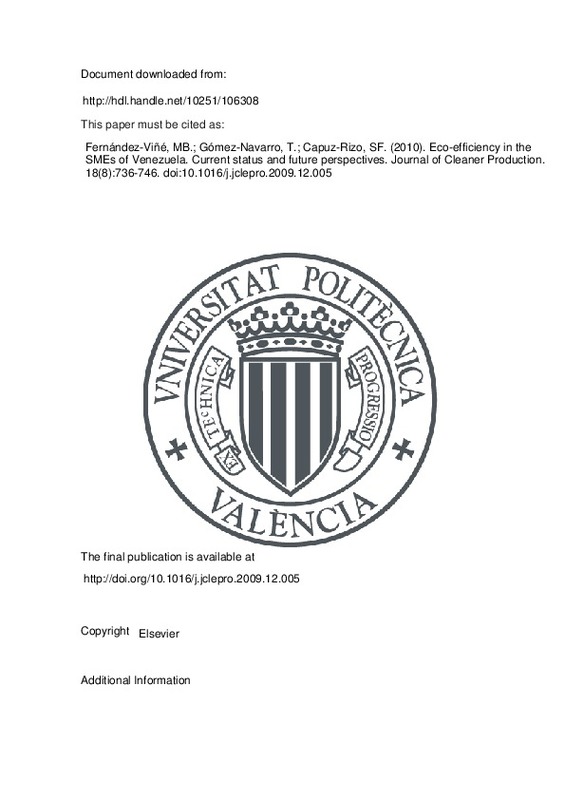JavaScript is disabled for your browser. Some features of this site may not work without it.
Buscar en RiuNet
Listar
Mi cuenta
Estadísticas
Ayuda RiuNet
Admin. UPV
Eco-efficiency in the SMEs of Venezuela. Current status and future perspectives
Mostrar el registro completo del ítem
Fernández-Viñé, MB.; Gómez-Navarro, T.; Capuz-Rizo, SF. (2010). Eco-efficiency in the SMEs of Venezuela. Current status and future perspectives. Journal of Cleaner Production. 18(8):736-746. doi:10.1016/j.jclepro.2009.12.005
Por favor, use este identificador para citar o enlazar este ítem: http://hdl.handle.net/10251/106308
Ficheros en el ítem
Metadatos del ítem
| Título: | Eco-efficiency in the SMEs of Venezuela. Current status and future perspectives | |
| Autor: | Fernández-Viñé, María Blanca | |
| Entidad UPV: |
|
|
| Fecha difusión: |
|
|
| Resumen: |
[EN] This paper presents a comparison analysis of eco-efficiency in the small and medium sized enterprises (SMEs) of Venezuela. The research can be divided into three parts: the first part reviews similar studies in the ...[+]
|
|
| Palabras clave: |
|
|
| Derechos de uso: | Reconocimiento - No comercial - Sin obra derivada (by-nc-nd) | |
| Fuente: |
|
|
| DOI: |
|
|
| Editorial: |
|
|
| Versión del editor: | http://doi.org/10.1016/j.jclepro.2009.12.005 | |
| Tipo: |
|







![[Cerrado]](/themes/UPV/images/candado.png)


